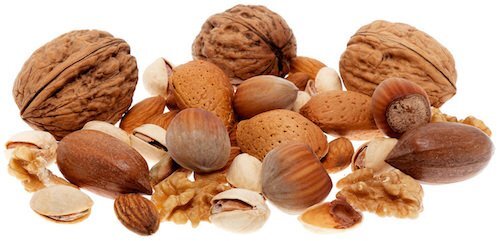When are tree nut allergies discovered?
Tree nut allergies are one of the most common food allergies diagnosed amongst infants and children, but tree nut allergies can be diagnosed in adulthood. An allergy to tree nuts tends to last a lifetime, but about 9% of children with tree nut allergies may outgrow their allergy, according to research.
Current studies show that people who are allergic to one tree nut may not necessarily be allergic to all tree nuts and peanuts. This is very different from previous recommendations that those with allergies to a particular tree nut avoid all tree nuts and peanuts, due to the high risk of cross-contamination with tree nuts during the manufacturing process and a chance of cross-reactivity.
How to avoid tree nuts
To prevent a possible reaction, avoid tree nuts and nut products. Because even trace amounts can trigger an allergic reaction, avoidance is key to preventing reactions and serious health consequences. Reading food labels, asking questions and self-advocating are the best ways to avoid tree nuts. Because tree nuts are one of the Top 8 allergens, the FDA requires that all packaged food products clearly list them as an ingredient. Learn how to read a food label for tree nut ingredients before consuming packaged food, and be sure to always check for precautionary “may contain” statements with cross-contamination warnings. Note that manufacturers are not legally required to label for potential cross-contamination.
Tree nuts can hide in some surprising places. Alcoholic beverages like amaretto (almond) and Frangelico (hazelnut) may contain nuts or nut flavoring — the word “botanicals” or “natural flavoring” may mask nuts. Call a manufacturer if you are unsure about the ingredients. Tree nut oils such as shea butter and argan oil may also be used in beauty products, lotions, soaps, hair care and cosmetics. Read labels carefully before using these products as well.
Tree nuts can often be found in:
- Cereals
- Crackers
- Cookies
- Candy
- Chocolates
- Energy bars
- Flavored coffee
- Frozen desserts
- Marinades
- Nougat
- Sauces like BBQ
- Salad dressing
- Salsa
- Soups
- Cold cuts, such as mortadella
- Chinese, African, Indian, Thai and Vietnamese food
- Ice cream parlors
- Bakeries
- Natural extracts such as pure almond extract
Foods to avoid:
- Almond
- Artificial nuts
- Brazil nut
- Beechnut
- Butternut
- Cashew
- Chestnut
- Chinquapin nut
- Coconut*
- Filbert/hazelnut
- Gianduja (a chocolate-nut mixture)
- Ginkgo nut
- Hickory nut
- Litchi/lichee/lychee nut
- Macadamia nut
- Marzipan/almond paste
- Nangai nut
- Natural nut extract (e.g., almond, walnut)
- Nut butters (e.g., cashew butter)
- Nut meal
- Nut milk (e.g., almond milk, cashew milk)
- Nut paste (e.g., almond paste)
- Nut pieces
- Pecan
- Pesto
- Pili nut
- Pine nut (also referred to as Indian, pignoli, pigñolia, pignon, piñon, and pinyon nut)
- Pistachio
- Praline
- Shea nut
- Walnut
- Natural nut extract
- Nut distillates/alcoholic extracts
- Nut oils (e.g., walnut oil, almond oil)
- Black walnut hull extract (flavoring)
- Walnut hull extract (flavoring)
Non-food products that could have tree nuts:
- Alcohol
- Beauty products (lotion, hair care products and soap) with tree nut oil such as argan oil
- Birdseed
- Beanbags which may be stuffed with walnut shells
Alternative names for tree nuts:
- Almond (sweet): Prunus amygdalus dulcis
- Almond (bitter): Prunus amygdalus amara
- Brazil nut: Bertholletia excelsa
- Butternut: Juglans cinerea
- Cashew: Anacardium occidentale
- Chestnut: Castanea sativa and other Castanea species
- Coconut: Cocos nucifera
- Gingko nut: Ginkgo biloba
- Hazelnut/Filbert: Corylus avellana
- Lychee: Litchi chinensis
- Macadamia/Bush nut: Macadamia ternifolia, m. integrifolia
- Pecan (Hickory): Carya illinoinensis
- Pili nut: Canarium ovatum
- Pine nut: Pinus pinea
- Pistachio: Pistacia vera
- Shea: Vitellaria paradoxa (Butyrospermum parkii)
- Walnut: Juglans regia and other Juglan species
Tree nut substitutes:
- Sunflower or pumpkin seeds (if not allergic to seeds)
- Soybeans, peas or chickpeas (if not allergic to soy)
- Crushed pretzels — use gluten-free pretzels if you avoid wheat
Discover More!
Learn how to order in a restaurant with a tree nut allergy
Browse tree nut-free recipes







